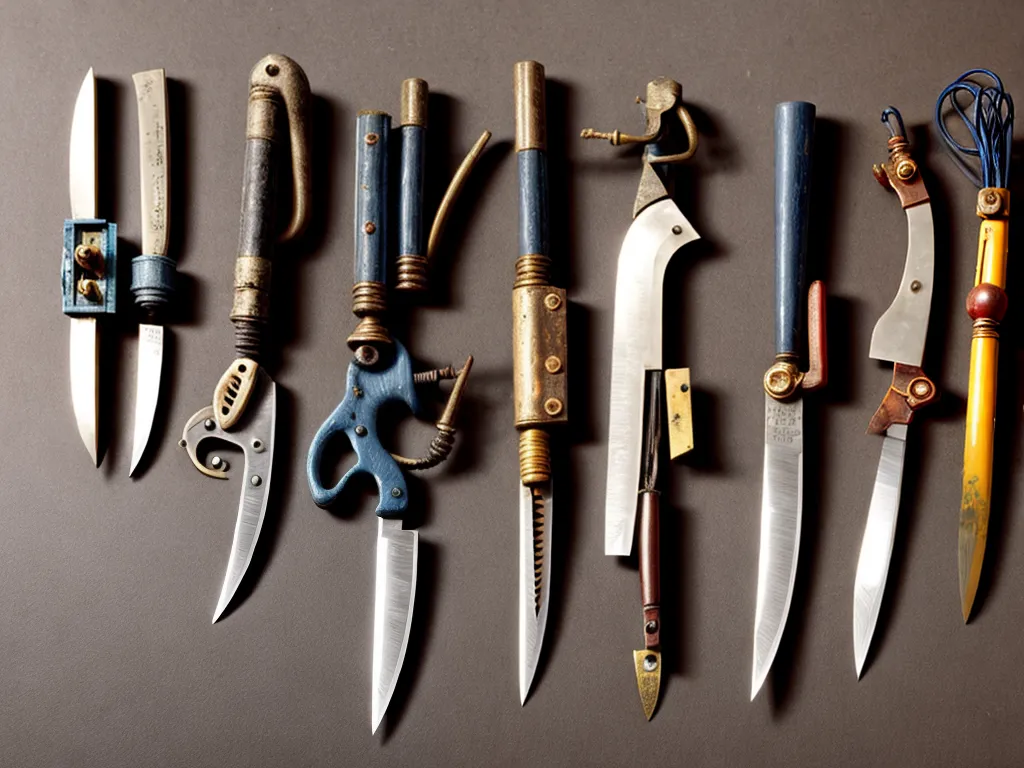
The Forgotten History of Knife Switches in Early 20th Century Wiring
Introduction
The early days of electrical wiring in buildings and homes relied on rudimentary systems and components that have long since been replaced by more advanced technology. One such component was the knife switch, a primitive switching device that played an important transitional role in the evolution of modern electrical switches and circuits. Though largely forgotten today, knife switches were a vital part of enabling early electrical distribution and lighting systems. Their distinctive operation and aesthetic make them a fascinating element of turn-of-the-century electrical history.
What Are Knife Switches?
A knife switch is a simple mechanical on/off switch typically used to control lights and other electrical loads. It consists of a metal strip or blade that pivots to make or break contact with stationary metal clips or terminals. The long blade handle resembles a knife, giving the switch its name.
Knife switches were commonly made from brass, copper, or galvanized steel. They featured a hinge along one side of the blade and a handle on the other. Spring pressure held the blade in place while metal clips gripped the sides of the blade when closed to provide a secure electrical connection. The handle allowed users to manually pivot the blade open or closed.
Unlike modern switches which fully enclose the contacts, knife switches exposed the bare copper or brass strips and terminals. The blades were usually mounted upright on a porcelain base. Larger knife switches were often panel mounted and operated vertically like a knife slicing down to make contact.
Early History and Development
Knife switches trace their origins to primitive switch designs used before the late 1800s. As urban electrical distribution networks emerged in the US and Europe, more standardized and refined switches were needed.
The switches took their name from the first crude designs that utilized an actual pocket knife blade jammed into a wood block to open and close a circuit. Thomas Edison's Menlo Park laboratory experimented with early knife switch prototypes in the 1870s and 1880s.
Over the next few decades, knife switches evolved into a common commercial product made by companies like General Electric and Westinghouse. A variety of designs emerged including basic open blades, enclosed switches, and fused safety switches. Each generation improved the safety, reliability, and capacity of knife switches.
Widespread Early 20th Century Use
By the early 1900s, knife switches became a ubiquitous component in residential and commercial electrical systems across America and Europe. Their simplicity and low cost made them a practical choice before more sophisticated switches were available.
In homes and buildings, knife switches mounted on porcelain bases were often installed beside light fixtures to manually control lighting circuits. This allowed occupants to easily turn lights on and off. Larger knife switches controlled distribution panels, appliances, motors, and industrial equipment. Fused models provided basic overload protection.
Before circuit breakers, fuse boxes employed banks of knife switches - one per fuse - to isolate individual circuits. Master knife switches ahead of the fuse box could kill power to the entire premises. The switches were also used at the top of lighting poles to control street lamps.
Decline and Replacement
By the 1920s, knife switches began falling out of favor as safer and more convenient alternatives emerged.
Enclosed switches like the tumbler switch offered more protection and ease of use. The introduction of circuit breakers in the 1930s eliminated the need for fuse boxes full of knife switches. Maintaining all the moving switch parts was also time consuming.
Industrially, large motor starters and switches like those made by Square D supplanted individual knife switches for controlling motors and large loads. For homeowners, light switches with self-extinguishing arc chutes became ubiquitous by mid-century.
Today, knife switches remain in some legacy industrial settings but are considered obsolete for general use due to more modern switching technology. However, they remain a unique relic of the early days when electricity was just beginning to transform daily life. The few that survive serve as fascinating examples of early 20th century electrical engineering and design.
Conclusion
Though made obsolete by improved switches and safety devices, knife switches played an important transitional role in early electrical distribution systems. Their distinctive and exposed copper blades were a familiar sight in the first wired buildings and factories. The knife switch's rise and fall followed the many rapid advances in electrical technology that occurred between about 1880 and 1930. Though now long forgotten, knife switches powered the lights, machines, and appliances that helped usher in the modern electric world.